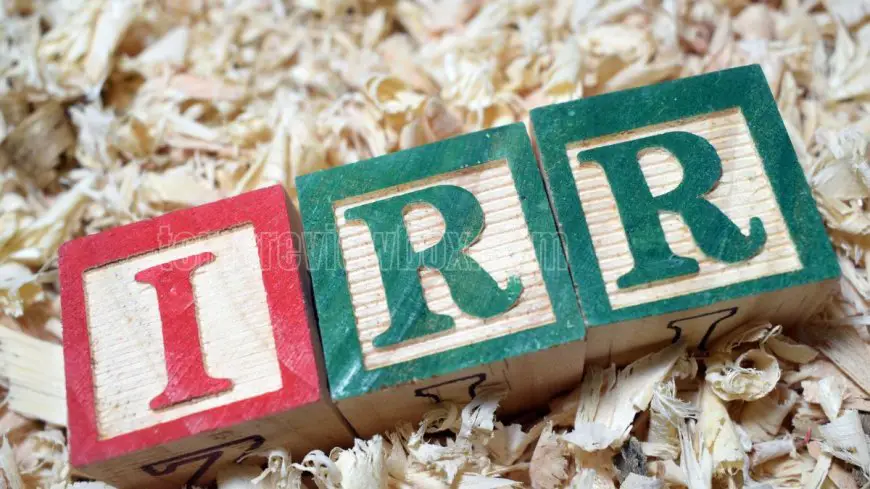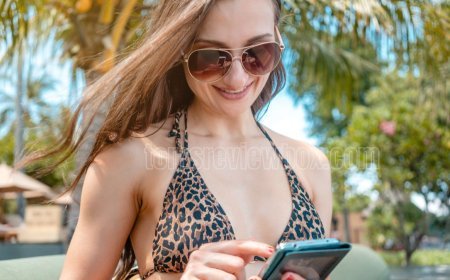What Is Internal Rate of Return (IRR) in Finance? Definition & Calculation
Discover what IRR in finance means, how to calculate it, and why it's crucial for investment decisions.

Key Takeaways
- The IRR, or Internal Rate of Return, is one of the main financial measures used to gauge the potential profitability of an investment. It’s defined as the discount rate at which a project’s net present value equals zero.
- IRR is an essential tool for comparing different investment opportunities, allowing decision-makers to prioritize projects with the highest potential returns.
- IRR calculation consists of determining cash flows, projecting future initial investments, and utilizing IRR formulas or financial calculators to arrive at the rate.
- Real-world applications of IRR include analyzing commercial real estate projects, assessing leveraged buyouts (LBOs), and evaluating investment opportunities.
- IRR makes investment decisions straightforward and easy to understand. It has some drawbacks. It is heavily dependent on cash flow assumptions and often produces truly misleading results.
- A comparison of IRR with alternative metrics, like NPV, provides a more comprehensive insight into financial analysis. Each metric has its own distinct purpose, creating a more holistic analysis.
In finance, IRR refers to Internal Rate of Return, a commonly used measure of an investment’s expected profitability. It represents the discount rate at which the net present value (NPV) of all cash flows from a project equals zero.
In short, it’s an incredibly powerful tool for investors to calculate the expected internal rate of return from a given investment over its life. IRR is commonly used in capital budgeting and project comparisons to decide where to allocate scarce resources for maximum return.
For instance, companies use it to make decisions on new projects, expansions, or acquisitions. The higher the IRR, the better the investment opportunity.
IRR is helpful for simplifying complex cash flow calculations into a single number, making it easier to understand and make an informed financial decision.
What is IRR in Finance
If you’re looking to get into finance, understanding Internal Rate of Return (IRR) is essential. It’s widely misused by people to determine if investments and projects are profitable.
It acts as a break-even rate, showing the discount rate at which a project's net present value (NPV) equals zero. Both investors and managers can learn a lot about a project’s potential returns through IRR interpretation. This understanding empowers them to make better financial decisions.
Definition of IRR
The resulting IRR is the discount rate at which the present value of all future cash flows equals the original investment. This balance leads to an NPV of zero.
Simply put, it is the return on an investment, or IRR, of a project. For instance, imagine a company investing $10,000 in the development of a new product, which they expect will yield returns in five years.
Therefore, if the IRR is 15%, the project will provide the investor with a 15% annual return that would offset the costs and income generated.
IRR is different from simple ROI in that it accounts for the time value of money. This alone makes it a powerful tool for comparing investments with varying cash flow patterns.
Tolerance-based methods such as trial and error or Newton-Raphson further compute IRR correctly.
Importance of IRR in Decision-Making
IRR is a very important part of any financial plan. In capital budgeting, firms select the projects with the highest IRRs, such as selecting the project with a 32% IRR over a project with a 20% IRR.
It’s a primary tool for estimating expected returns, comparing like opportunities, and allocating limited resources efficiently.
How to Calculate IRR
Calculating the Internal Rate of Return (IRR) is one of the tools needed to determine the potential profitability of investment projects. It requires following certain steps, using certain formulas and tools that are aimed to simplify the process and make what seems like a complex process much easier.
Realistic cash flow projections provide the foundation for sound IRR calculations, emphasizing the importance of this key financial analysis.
1. Steps to Calculate IRR
To calculate IRR, follow these steps:
- Identify all cash flows associated with the investment, starting with the initial investment and any subsequent cash inflows or outflows. For instance, if you plan to invest $10,000 today, with an expected return of $3,000 per year for the next five years, write these values down.
- Make your best estimate of the total initial investment and every future cash inflow over the life of the project. That step goes a long way to helping you understand what exactly values you need for that calculation.
- To calculate the IRR, you can use the IRR formula or a financial calculator, such as Excel, to determine the rate. In Excel, input the cash flows into a range and apply the formula =IRR(values), such as =IRR(A1:A5), where A1 to A5 contains your investment and cash flow data.
2. IRR Formula Explained
The IRR formula solves for this discount rate. This rate is the internal rate of return, the one that sets the NPV of cash flows to zero.
Mathematically:[ 0 = \sum \left( \frac{C_t}{(1 + IRR)^t} \right) ]where ( C_t ) represents cash flows and ( t ) is the time period.
The formula essentially ties all cash flows received or paid to the time value of money. It underscores the principle that initial returns are more valuable than subsequent returns. Due to the iterative nature of the calculation, non-analytical methods, like software, are required.
3. Methods for Calculating IRR
Manual approaches are trial and error or interpolation, which takes a lot of time but works well for basic situations.
An IRR calculation is easy to do with financial calculators or software such as Excel or other specialized tools. Excel makes it easy to do rapid IRR calculations using the built-in IRR function or the more sophisticated XIRR for irregular cash flows.
Automated tools are much more efficient and less prone to mistakes than manual calculations.
4. Using an IRR Calculator
IRR calculators make the process easier by taking out the guesswork. Just input your cash flow information, define your time period, and allow the IRR calculator to do the heavy lifting.
These tools are extremely valuable for multi-year, more complex projects – providing a level of speed and precision. Most even support advanced features such as XIRR for non-annual cash flows, allowing use for complex financial simulations across multiple asset classes.
Practical Examples of IRR
The Internal Rate of Return (IRR) is difficult to grasp, but it’s easier if grounded in practical examples. When looking at real world examples, the gap between financial theory and investment practice is stark and illustrates where the real decision making lies.
Cash flow analysis, LBO models, and comparisons to other profitability metrics introduce practical examples of the meaning behind profitability. These examples illustrate the powerful potential for IRR to inform evaluation.
1. Cash Flow Analysis Example
A cash flow analysis starts with key components:
- Initial investment: For example, let’s say the initial cost is $500,000.
- Annual cash inflows: Anticipated returns, like $125,000 a year.
- Investment period: A 5-year timeline.
If these numbers are plugged into Excel, the IRR calculated is 16%. This implies that the investment appreciates at an effective annual rate of 16%, giving some sense of its potential profitability.
Measuring this against industry benchmarks, like the 15%-20% IRR target in commercial real estate, further clarifies and sharpens decision-making.
2. IRR Calculation Example
Take a hypothetical project with the following cash flow: $500,000 outflow in Year 0 and $125,000 inflow annually over 5 years.
IRR calculated using excel comes out to be 16%. This represents the project’s internal rate of return, informing on whether the project exceeds the investment’s threshold hurdle rate.
3. LBO Model and IRR Example
In leveraged buyouts (LBOs), IRR is incredibly important when calculating returns.
So for instance, if a private equity firm is anticipating an IRR of 30% at exit, this would indicate significant profitability. Debt structure and when you exit all play a large role in this calculation.
4. Comparing IRR with MoM Returns
While IRR captures annualized return, MoM is concerned with total profit.
For example, an LBO returning $210M on an $85M investment has a MoM of 2.5x. IRR works better for more time sensitive decisions, but MoM more accurately fits the longer-term growth trends.
Applications of IRR in Finance
Internal Rate of Return (IRR) is a versatile financial metric widely used to assess the profitability of investments. By using the IRR method to calculate the annualized rate of return, it provides a clearer picture of an investment’s potential, especially in real estate investment and financial modeling contexts.
Evaluating Investment Opportunities
IRR thus acts as an easy to use, real-world metric for determining the potential success or failure of future investments. Investors use it to quickly estimate annual returns, taking into consideration investor cash flow patterns throughout the investment period.
When evaluating one project versus another, an IRR of 18% is impressive next to the 12% of the alternative project. The higher IRR indicates that the first option might be much more lucrative.
Selection criteria comparison of IRR with required rates of return or industry benchmarks confirms that the investments selected are consistent with the organization’s financial objectives. Analysts often combine IRR with Net Present Value (NPV) to make more informed decisions, as highlighted by research in the Harvard Business Review. This combined strategy provides a more nuanced view of profitability than standalone metrics can provide.
Analyzing Commercial Real Estate Projects
When investing in real estate, IRR becomes indispensable for measuring profitability. Take a commercial property investment: IRR reflects the annual return, incorporating cash inflows from rent and outflows like maintenance costs.
Cash flow projections are still key here, as they are what directly drives the IRR calculation. That project that looks like it’s producing a steady stream of cash flow at a 20% IRR certainly does sound attractive.
A project with variable returns and an IRR of 10% sounds less appealing. This metric is valuable for investors looking to compare opportunities and prioritize those with the most consistent long-term returns.
Assessing LBO Model Returns
Leverage Buyout (LBO) models rely heavily on IRR to measure investor returns. IRR plays a key role in understanding how debt affects profitability.
A highly leveraged deal might show an IRR of 25%, but this often comes with higher risk due to unpredictable factors like market changes or interest rates. Analysts consider cash flow timing in LBO scenarios, as delayed returns can lower IRR.
The metric enables investors to evaluate whether the projected returns justify the risks associated with leverage.
Advantages and Disadvantages of IRR
In finance, the Internal Rate of Return (IRR) is a common metric used to evaluate the expected profitability of real estate investments and other potential investment opportunities. By comparing the percentage return an investment will likely produce, this IRR calculation formula can provide useful information on investment returns. While this has the benefit of making investment decisions easier and unifying strategies, it has significant drawbacks. Let’s unpack this a bit more.
Benefits of Using IRR
One of the real advantages of IRR is its distinctive advantage in giving you a simple and effective way to compare different investment opportunities. The money-weighted rate of return (MWRR) expresses profitability as a percentage. This added clarity allows stakeholders to quickly understand how well their investments are performing.
Generally, the higher the IRR the better, such as an investment with an IRR of 22% would be viewed as a strong return. That clarity allows decision-makers to better match their project selections with available funding. Further, it shows that any IRR above the RRR will be profitable.
IRR further makes conversations easier, especially for non-financial stakeholders. Its intuitive appeal frees up investor attention to work on and confidently pursue the higher-return projects. So for example, if you have two projects that generate IRRs of 18% and 12%, the higher IRR obviously indicates the better opportunity.
Limitations of IRR in Financial Analysis
Even with its great utility, IRR has major limitations. Cash flow assumptions are central to this discussion. They forget that money today is worth more than money in the future.
IRR assumes that all returns are reinvested at the same rate, which is often unrealistic and does not correspond with a company’s cost of capital. This can result in inflated estimates. For example, two projects with the same IRR but one takes substantially longer to complete could have tremendously different results, exposing decision-makers to misleading information.
IRR by itself is not able to factor in externalities or risk. Looking at it alongside other metrics such as Net Present Value (NPV) offers a fuller picture. Without this, IRR is a dangerous measure that can result in poor investment decisions.
Factors Affecting IRR
IRR is affected by multiple factors that may directly or indirectly define its results. We can divide these factors into two general categories—external influences and internal influences. Each of these groups is instrumental in figuring out if an investment is a go or no-go.
Grasping these factors provides greater transparency when evaluating IRR estimates and aids in making smarter, more informed choices.
Causes of IRR Increase
There are many reasons for an increasing IRR, most of which can be attributed to bettering financial performance. For instance, enhanced cash flow projections, such as higher-than-expected revenues from a property rental or a product launch, can boost the IRR. When an investment can produce larger cash inflows in the short term, it has a massive edge.
This advantage is magnified by the time value of money. Decreased expenses are just as important. Now imagine building that same commercial building under budget because you didn’t waste a single resource in the process. These savings compound the net returns and increase the IRR.
Add in favorable market conditions, such as lower interest rates or higher demand, and projections look even rosier, making the investment seem all the more lucrative.
Reasons for IRR Decrease
IRR can increase when specific hurdles start to appear. Unanticipated costs, like surprise maintenance on a rental property, eat into the cash return, reducing return even further. When actual cash inflows are significantly less than projected, it affects IRR.
This typically occurs as a result of decreased sales or occupancy, resulting in decreased IRR’s. A shift in external factors, such as increasing interest rates or poor overall economic conditions, can further affect IRR.
These shifts regularly raise the cost of capital thereby making future cash inflows less attractive. For example, a retail business facing weakening consumer sentiment will find its IRR heading south. This decrease happens as the lack of revenues limit the company’s financial achievements.
Comparing IRR with Other Metrics
When evaluating potential investments, knowing where the irr method stands in relation to other financial metrics is critical. The internal rate of return (IRR) is widely used due to its ease of use in comparing investment returns. Its true power is revealed when you use IRR alongside other tools, such as NPV, to gain a more holistic view of your financial model. Each metric, including IRR, has distinct advantages that are best applied to certain situations in financial analysis.
Differences Between IRR and NPV
The primary difference lies in the methodology of the IRR approach versus NPV for making investment decisions. The internal rate of return (IRR) is concerned with the rate of return at which the net present value of cash inflows equals cash outflows. It’s calculated as a percentage, providing a convenient overview of profitability at a glance, especially useful in financial modeling.
On the other hand, NPV calculates the net present value of a series of cash flows by discounting each at a specified interest rate. This calculation yields a dollar amount that represents the overall value of the investment, making it a vital tool for assessing potential investment opportunities.
For instance, consider two projects: one with a 12% IRR and $50,000 NPV, and another with an 8% IRR but $80,000 NPV. Though the IRR method recommends the first project, NPV indicates that the second has a greater overall financial benefit. This highlights NPV's value for prioritizing investments when capital is constrained.
IRR’s strengths lie in comparing projects of similar size or length, particularly those with relatively certain cash flows, such as in real estate investment. NPV also considers the size and timing of cash flows, providing a complete picture of value and potential investment objectives.
However, IRR’s focus on timing can mislead when reinvestment assumptions vary. By using both metrics, such limitations can be avoided for more informed business decisions.
Excel XIRR vs. IRR Functions
Excel provides two tools for calculating IRR: IRR and XIRR. Since the IRR function assumes equal intervals between cash flows, it works best for projects that have the same payment period.
Unlike IRR, XIRR manages irregular cash flows by considering specific dates, providing more flexibility and precision. For example, consider an investment that pays $10,000 in January and $15,000 in September. The XIRR normalizes its calculations based on the real timing of those payments.
This aspect works great for private equity or investments with irregular cash flow structures. For more simple, consistently-timed cash flows, the IRR function is adequate. Both have great value, but which one is better depends on the cash flow shape.
Conclusion
IRR further enables better financial decisions IRR paints a realistic picture of what investments might earn or lose in terms that are concrete and relevant. It’s their tool to bringing clarity to complicated decisions, helping them weigh risks and rewards with greater confidence. Used in conjunction with other metrics, though, it provides a much more complete view of an investment’s value.
Whether you’re managing a business, planning a project, or assessing personal investments, IRR offers a straightforward way to gauge profitability. Its real strength lies in giving a clear perspective on financial growth and long-term planning.
Learn how IRR can inform your decision-making. Plug it into your toolbox, along with other resources, to develop better strategies and achieve your financial objectives. The sooner you get to know it, the better prepared you’ll be to take advantage of all this new opportunity.
Frequently Asked Questions
What is IRR in finance?
Internal Rate of Return, or IRR, is a crucial financial metric used to evaluate the profitability of a potential investment. It identifies the discount rate at which the net present value (NPV) of future cash flows is zero, making it essential for investment decisions and assessing various investment options.
How is IRR calculated?
To calculate IRR, which is a crucial metric for evaluating potential investment opportunities, you have to determine the discount rate. This rate will bring the NPV of cash inflows and outflows to zero, often using financial modeling tools like Excel for the irr calculation formula.
Why is IRR important?
IRR helps investors and businesses determine the profitability of a project or investment by providing a clear percentage return. This allows for effective investment decisions and comparisons of potential investment opportunities against required benchmarks.
What are the benefits of using IRR?
The internal rate of return (IRR) simplifies investment decision-making by offering a single return rate to concentrate on. This IRR metric allows for straightforward comparisons across different investments without needing assumptions about the reinvestment rate, unlike other financial modeling approaches.
What are the limitations of IRR?
The IRR method makes the unrealistic assumption of constant reinvestment rates, which can mislead investors when comparing different investment projects with varying cash flow profiles and lengths.
How does IRR compare to NPV?
Though the IRR metric indicates the percentage return rate, NPV reflects the dollar amount profitability of an investment project. NPV is frequently viewed as a more dependable measure because it considers the size of the cash flow amount.
Can IRR be negative?
Yes, the internal rate of return (IRR) can be negative, particularly if a real estate investment or project generates negative cash flows during each period analyzed. A negative IRR indicates that the investment returns will not recover the original capital.
What's Your Reaction?







































![MacBook Pro M5: All the features and specs you need to know [LEAKS REVEALED]](https://tomsreviewbox.com/uploads/images/202502/image_430x256_67bd6d7cd7562.jpg)



























